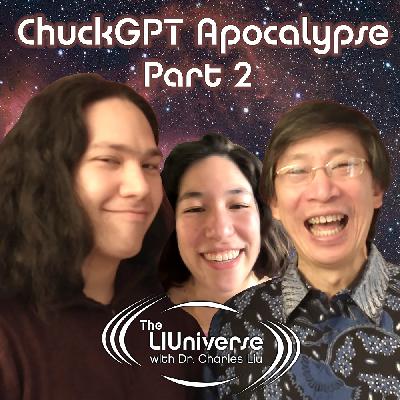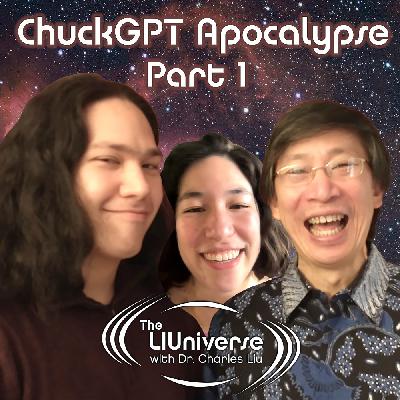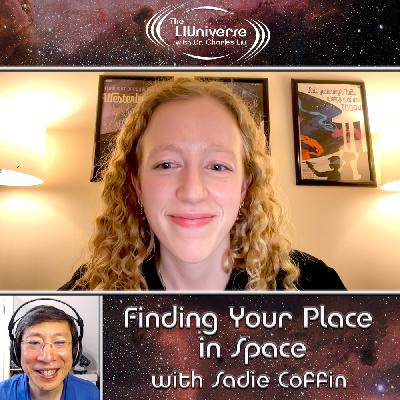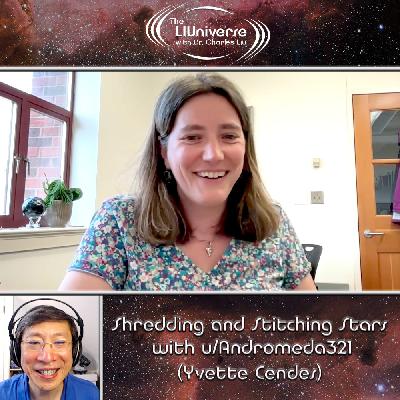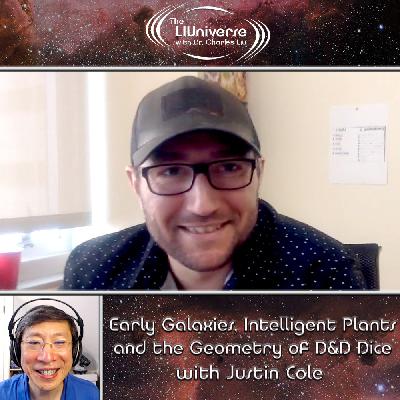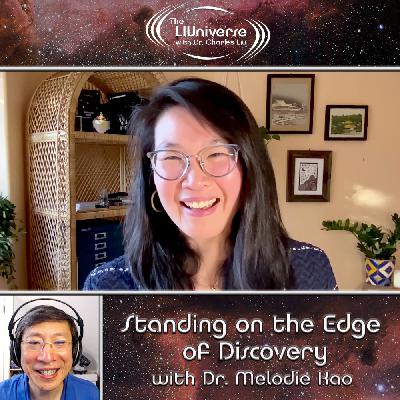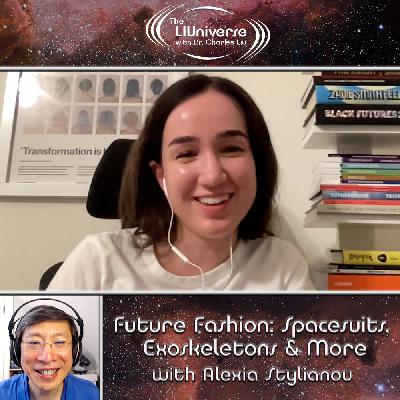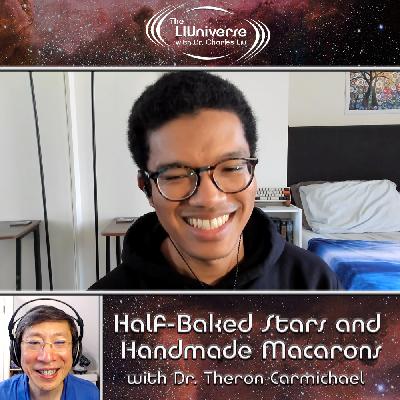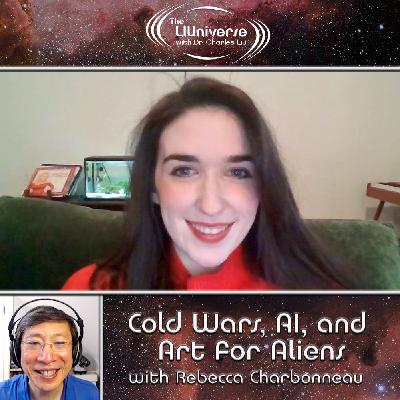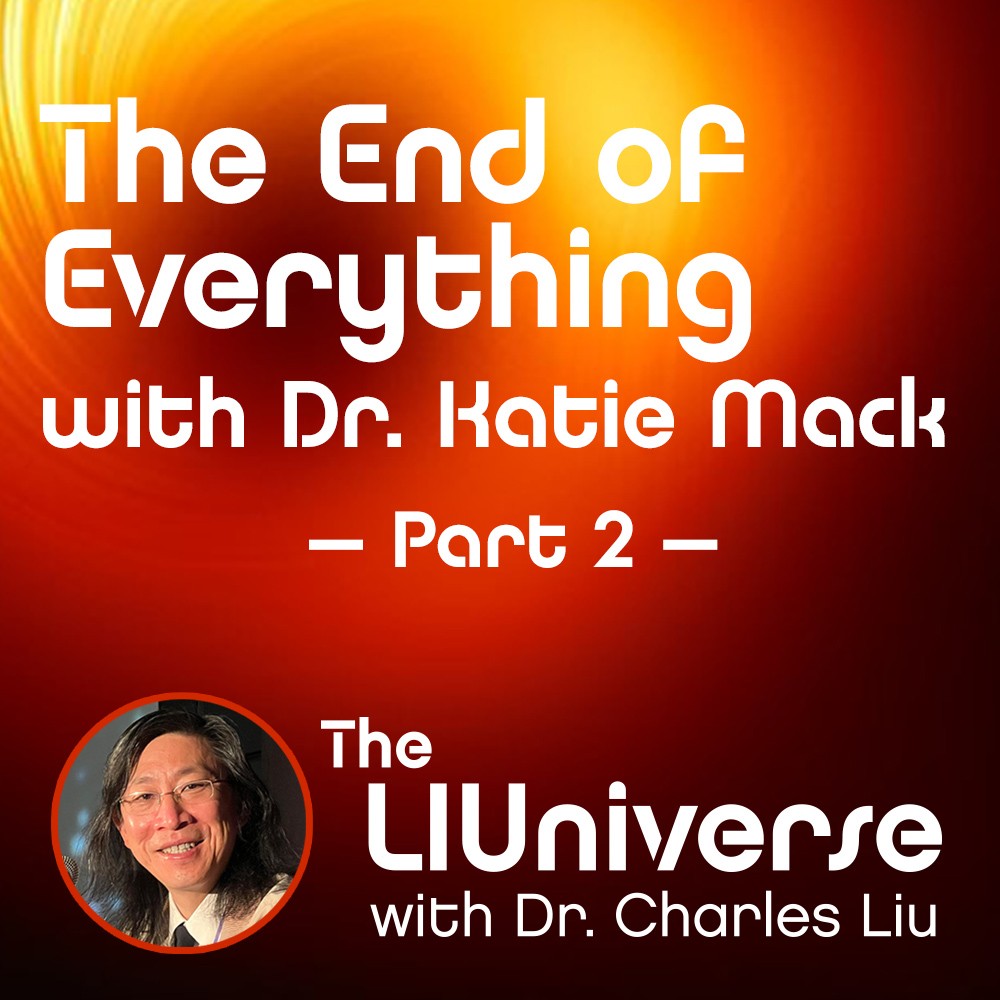Chuck GPT 4.0
Description
Welcome to Season 4 of The LIUniverse and thank you for joining us on this journey.
We’re kicking off the new season with another Chuck GPT episode devoted to answering your questions, and to do that, we’ve brought back archaeology expert Hannah Liu, MEd. She’s not alone: joining Dr. Charles Liu and co-host Allen Liu is The LIUniverse’s Social Media Guru, Stacey Severn.
As always, we start off with the day’s joyfully cool cosmic thing, Earth’s temporary second moon 2024 PT5. Don’t get excited, though, because it’s only the size of a school bus and won’t be visible to the naked eye. But it gives Chuck the chance to ask Hannah about the impact of celestial visitors in the past, and she tells us the story of Caesar’s comet (C/-43 K1) which showed up for about a week in the summer of 44 BCE – not long after the assassination of Julius Caesar. Allen also brings up the Great comet of 1680 and how it affected the development of astronomy.
Our first question comes from NSimplexPachinko, who asks, “During condensation of matter to 300,000 years after the Big Bang, did spacetime cease to expand, or did it continue expanding at the same rate as the energy within it?”
Short answer: Yes. For the long answer, you’ll have to watch or listen to the show for Chuck’s description (honed for the Intro to Astronomy class he teaches) of decoupling, expansion, universal evolution and “BIG, BIG, INFLATION!”
Stacey reads the next question from a listener in Poland. Pshemo Ziembora wonders, “The volume/length of space should be different for every observer depending on how fast they’re travelling or how strong the gravity field is. In other words, the speed of light will always be constant for each observer, but it may have a different value than 300,000 km/second. Distances on cosmic scales may vary due to your speed. When you are traveling faster in space your distance should be shorter. What am I missing?”
Chuck explains that Pshemo isn’t missing anything and has got it exactly right, describing the insight we now call the “Lorentz Contraction” which Albert Einstein built into his Special Theory of Relativity. Allen explains the physics involved, with an example that includes muons and cosmic rays and how different mediums can impact the speed of light.
Speaking of Poland, Hannah shares a story about licking the wall of the Wieliczka salt mine, which she visited on a trip there. For those of you watching, you can see a photo of one of the caverns hollowed out by the miners, with statues and scenic reliefs carved from the salt. There are no photos of the reported salt tasting.
Our next question comes from one of Chuck’s Astronomy 100 students: “Is Earth Intelligent?”
Chuck describes the Gaia Hypothesis, before the group grapples with the question. Hannah looks at the skepticism around the validity of that very hypothesis, and then takes a typical LIUniverse deep dive into Percy Jackson, and Greek and Egyptian mythology. Allen assesses Earth’s intelligence through the lens of Artificial Intelligence. Stacey brings up the concept that climate change is the Earth taking revenge on humanity for our actions, which Hannah relates back to Greek mythology, natural disasters, and the role of Demeter in bringing about winter.
Finally, “@I have an unoriginal name” asks, “How does the cyclic model of the universe deal with information not being destroyed.” And Andy Love wonders “about the quantum gravity issue. My thought is that gravity is emergent, from loop or string vibrations, where the outward pulse of the loop or string creates the atoms (Higgs field) and the inward pulse is gravitational force meaning there is no need for a new quantum gravity theory, gravity is already quantum.”
Both of those questions spawned some interesting and far-ranging conversations amongst the group (Can you say slinky cosmology and quantum gravity?) that would be impossible to summarize for you here, so just please watch or listen to the episode now!
We hope you enjoy this episode of The LIUniverse, and, if you do, please support us on Patreon.
Credits for Images Used in this Episode:
– 2024 PT5’s orbit –NASA/JPL-Caltech – Public Domain
– Caesar’s comet coin –From ~18 CE in modern Spain, – Public Domain
– Comet C/2023 A3 Tsuchinshan-ATLAS – AlexL1024, Public Domain
– Great comet of 1680 –Lieve Verschuier, Public Domain
– Diagram of the universe’s expansion –NASA/WMAP Science Team, Public Domain
– Refraction in a block of plastic –Ajizai, Public Domain
– A muon’s view of Earth –The LIUniverse, derived from “Blue Marble”
– Wieliczka salt mine –Rj1979, Public Domain
– Gaia depicted on pottery –About 410 BCE, Public Domain
– Statue of Demeter –Photo by Marie-Lan Nguyen, CC BY
– Lord Kelvin’s Analog tide computer –Photo by Daderot, Public Domain
– Svalbard Global Seed Vault –Frode Ramone, CC BY
– ~1800 year old clothes preserved by a bog – Bullenwächter, CC BY
– LIGO gravitational wave signals –Caltech/MIT/LIGO Lab, CC BY
#TheLIUniverse #CharlesLiu #AllenLiu #HannahLiu #StaceySevern #SciencePodcast #AstronomyPodcast #2024PT5 #CaesarsComet #SlinkyCosmology #QuantumGravity #comets #GreatCometof1680 #UniversalExpansion #muon #GaiaHypothesis #PercyJackson #GreekMythology #Egyptianmythology #AI #ArtificialIntelligence #cyclicmodeloftheuniverse #LorentzContraction #AlbertEinstein #SpecialTheoryofRelativity #archaeology



